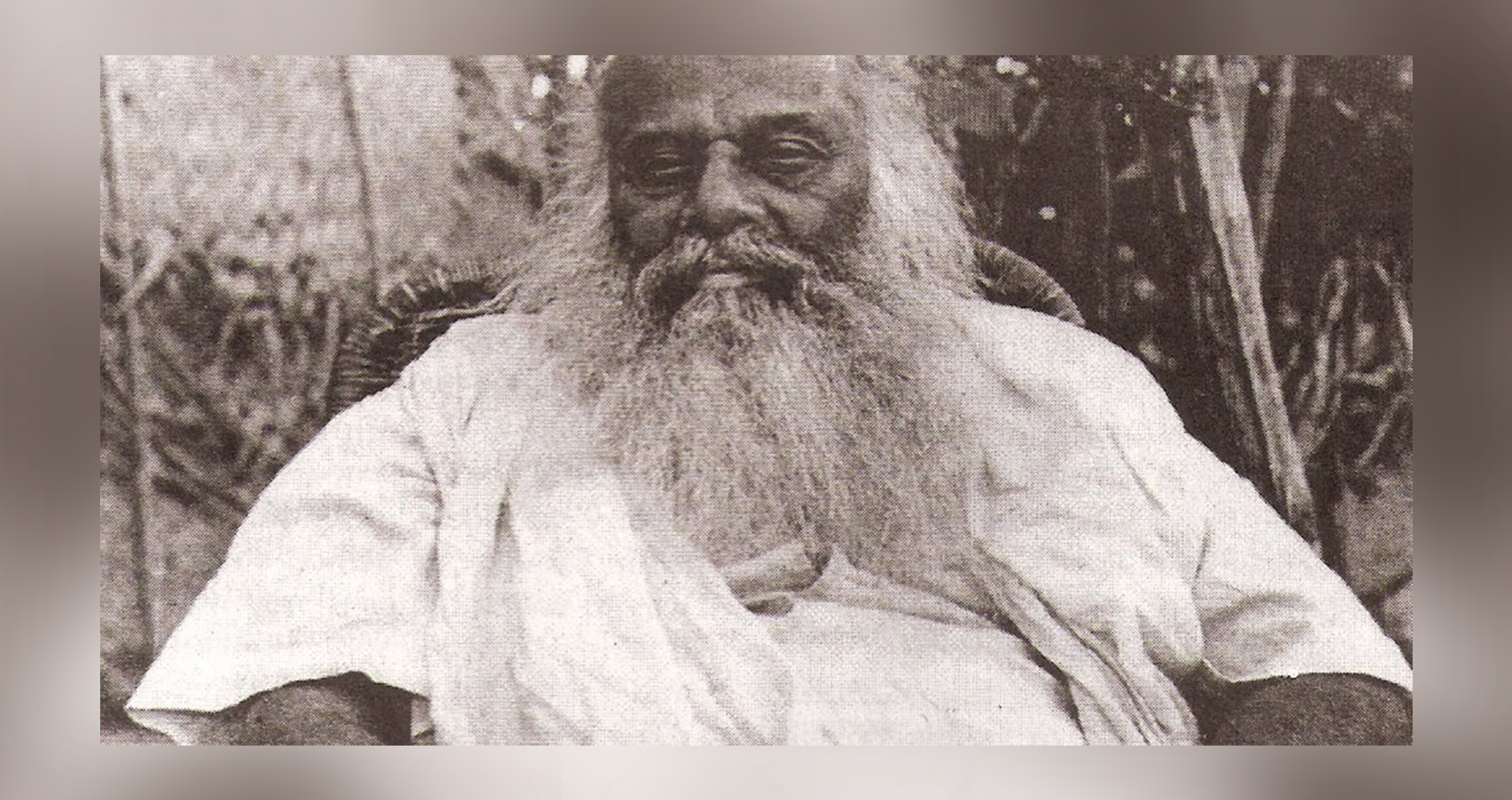NATARAJA GURU
Nataraja Guru, disciple and wisdom successor of Narayana Guru, was born as Natarajanin 1895 in the city of Bangalore, son of Dr. Palpu, a social activist and close associate of Narayana Guru. He received his primary education in Bangalore and his high school education in Ceylon (Sri Lanka). After securing the titles of M.A. and L.T. from Madras University, he would then become a fully devoted disciple of Narayana Guru. Finding him of a talented and creative mind, Guru began to teach him with much care, instructing him “to go far away and do great things”.
In 1923, Nataraja Guru (known at that time as Natarajan Master) started, with Narayana Guru’s blessing, the Narayana Gurukula in the Nilgiris, intended as a contemporary school modeled after the gurukulam asharams of ancient India. He spent three years with the Guru at Varkala, continuously receiving wisdom instruction from him. In 1928 he was then sent by Guru for higher studies in Europe, returning in 1932 with a D.Lit title with triple honours from the Sorbonne, Paris. Toward the end of that decade he worked as the head master of a high school not far from Varkala. It was during these days that Nataraja Guru founded the Narayana Gurukulam at Varkala, which would then become the official headquarters of the Gurukula movement.
On his fiftieth birthday he firmly took the following decisions:
- To develop Narayana Gurukula into a center of Wisdom as revalued and restated by Narayana Guru.
- To write a serious and comprehensive study on the life and teachings of Narayana Guru.
- To travel abroad in order to lecture upon Narayana Guru’s vision of oneness.
With such a purpose Guru began to write the book ‘The Word of the Guru’. In 1948 John Spiers became his disciple. Then Guru travelled to America to participate in a World Conference of Religions for Peace in New York. Attracted by his speech given there, Harry Jacobsen became a disciple, and even took the initiative to start a new Narayana Gurukula center in New Jersey. Guru would spend three years there teaching and writing his new book. In the meanwhile, he made a trip to Europe. On his return journey by boat, he met a man named Garry Davis who had given up his U.S. citizenship and declared himself a citizen of the world. He proclaimed that the world must become a single political unit in order to free the world of wars. By spending time with Guru, Mr. Davis got a clearer philosophical backing for his ideals.

In 1951 Guru returned to India. Under the leadership of Sivagiri Mutt, the followers of Narayana Guru bestowed the title upon him, Nataraja Guru, the wisdom successor of Narayana Guru. Years earlier, Guru had already been given the yellow upper cloth by Narayana Guru in recognition of his being a renunciate brahmacarin, when they had travelled together in Ceylon. He took formal sannyasa on the 1st of January, 1956, just after his sixtieth birthday.
In the early fifties, Swami Mangalananda and Nitya Chaitanya Yati became his disciples. The young Muni Narayana Prasad became a disciple in 1956. John Spiers started a monthly magazine entitled ‘Values’, which served as the English organ of Narayana Gurukula. It was published from the Bangalore center of the Gurukula. Swami Mangalananda took the initiative to publish the monthly ‘Gurukulam’ from Varkala. ‘Values’ ceased to be published when John Spiers left the Gurukula in the early seventies. The ‘Gurukulam’ monthly still continues.
The annual Gurukula convention was started in Varkala in the early fifties in order to provide a regular opportunity for seekers and followers of Narayana Guru to gather, make studies and share. In the fifties Nataraja Guru wrote his famous commentary on the Bhagavad Gita, which was first published in 1961. His commentary on the Atmopadesa Satakam, his Autobiography, and many of his serious books and articles were first serialized in the ‘Values’ magazine, later to be published as books.
In 1963, the foundation stone for the Brahmavidya Mandir (Institute of the Science of the Absolute) building was laid at Varkala. This place was intended as a center to study the Brahmavida (Science of the Absolute). Later it was renamed East-West Universe of Brahmavidya. In 1967, Guru would write his magnum opus in two volumes, An Integrated Science of the Absolute, which was a restatement of Brahmavidya as the Science of sciences. The basis for this study was Narayana Guru’s Darsana-Mala, which served as a basic framework to revalue all modern philosophy and science in the context of Brahmavidya. With a copy of this book in hand, Guru then travelled to many countries to discuss its theme with many scientists and critical thinkers.
Guru organized a “World Conference for Peace through Unitive Understanding” in 1970 at a newly established Gurukulam at Ezhumala in North Malabar. In 1972 Guru wrote a commentary on the Saundarya Lahari of Sankara. In this work, the ultimate value (ananda) is pictorially represented as the experience of supreme Beauty.
Nataraja Guru attained mahasamadhi in 1973.
